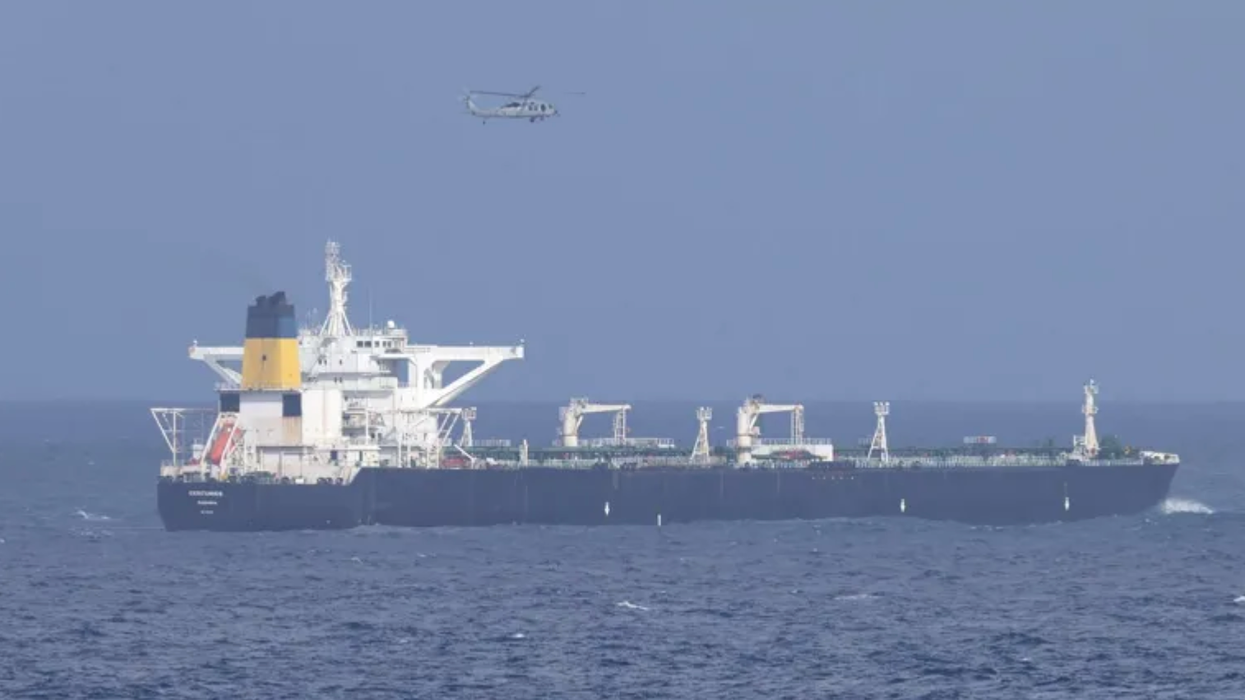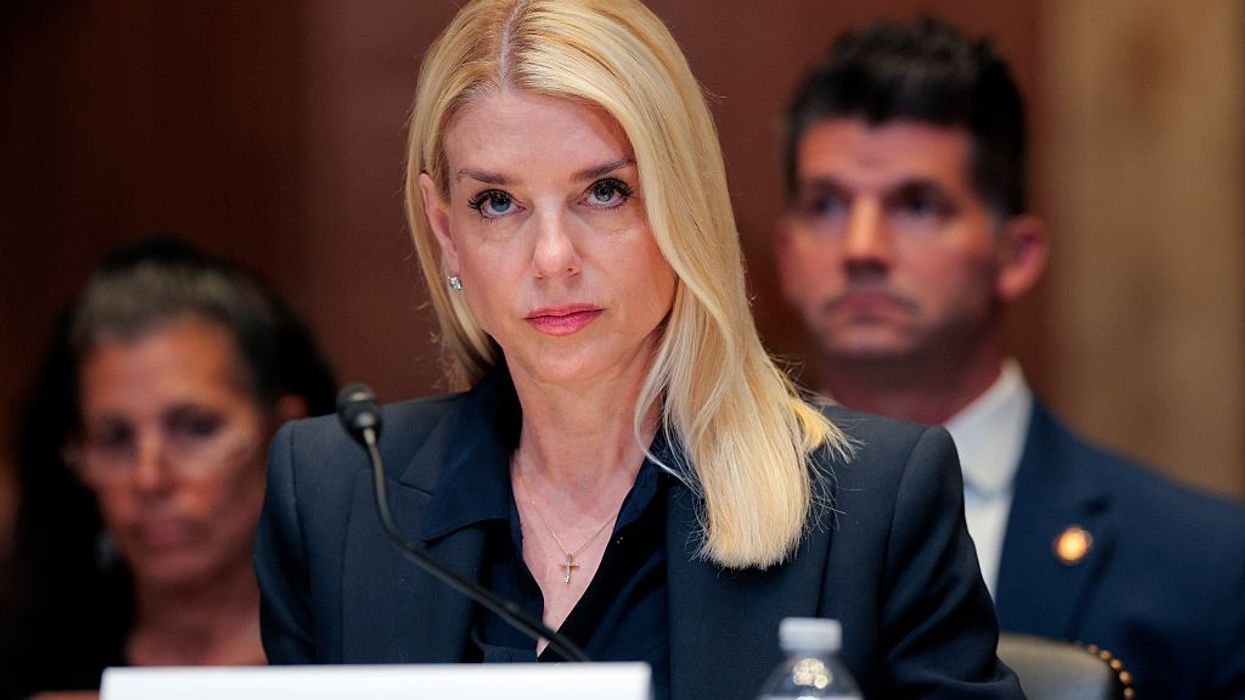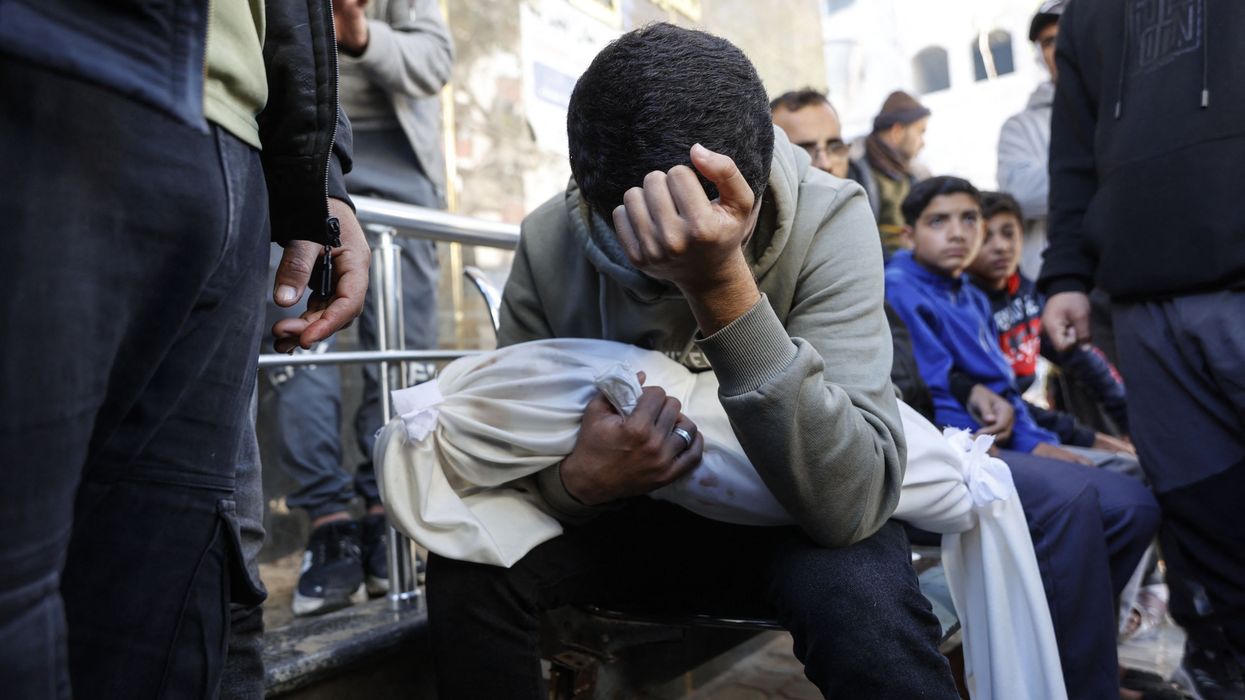July, 06 2023, 01:29pm EDT

Zaporizhzhia alarms should signal end of nuclear power pursuit
Deadly scenarios threatened could not happen at renewable energy site
TACOMA PARK, Maryland
Amidst accusations from both the Russian and Ukrainian sides that the Zaporizhzhia nuclear power plant in southeastern Ukraine has been wired for detonation or could be deliberately attacked during the current war there, one absolute truth remains: nuclear power plants are inherently dangerous.
In a time of national crises in multiple countries, increasing natural disasters and a worsening climate emergency, nuclear power is demonstrating that it is a liability rather than an asset.
Each nuclear reactor contains a lethal radioactive inventory, in the reactor core and also in the fuel pools into which the irradiated fuel is offloaded and, over time, densely packed. Casks also house nuclear waste offloaded from the fuel pools. Zaporizhzhia is the largest nuclear power plant in Europe with at least 2,204 tons of highly radioactive waste within the reactors and the irradiated fuel pools.
Depending on the severity of what transpires, any or all of this radioactive fuel could be ignited.
Amidst the unpredictability caused by the “fog of war", there remain many unanswered questions that have led to rumor and speculation:
Has the Zaporizhzhia nuclear plant in fact been wired for detonation and whose interests would be served by blowing up the plant?
Why is there an exodus of both Russian and Ukrainian plant personnel?
Will the sabotage of the downstream Kakhovka dam that resulted in catastrophic flooding, also lead to an equally catastrophic loss of available cooling water supplies for the reactors and fuel pools?
Will the backup diesel generators, frequently turned to for powering the essential cooling each time the plant has lost connection to the electricity grid, last through each crisis, given their fuel must also be replenished, potentially not possible under war conditions?
None of these threats would make headlines if Zaporizhzhia was instead home to a wind farm or utility scale solar array. This perhaps explains the rush now to downplay the gravity of the situation, with claims in the press that a major attack on the plant would “not be as bad as Chornobyl” and that radioactive releases would be minimal and barely travel beyond the fence line.
This is an irresponsible dismissal of the real dangers.
After the massive explosion at Chornobyl, the graphite moderator used in the reactor fueled the fire, with the smoke further lofting radioactive fallout far and wide. This has led to an assumption that major fires and explosions at Zaporizhzhia would result in less serious consequences since the reactor designs are not the same as Chornobyl’s.
However, if the uranium fuel in the Zaporizhzhia reactors or irradiated fuel storage pools overheats and ignites, it could then heat up the zirconium cladding around it, which would ignite and burn fiercely as a flare at temperatures too hot to extinguish with water. The resulting chemical reaction would also generate an explosive environment. The heat of the release and detonation(s) could breach concrete structures, then loft radioactive gas and fallout into the environment to travel on the weather.
Fallout could contaminate crucial agricultural land, potentially indefinitely, and would include Russia, should prevailing winds travel eastward at the time of the disaster.
And while Europe allows an already too high 600 becquerels per kilogram (Bq/kg) of radioactive cesium in food, contaminated food supplies from Ukraine that read at higher levels after a nuclear disaster could be exported to countries with even weaker standards, including the US where the limit is an unacceptable 1200 Bq/kg. But will those consuming such foodstuffs be counted among the victims of such a nuclear disaster?
The true numbers of those harmed by the Chornobyl disaster will never be known due to institutional suppression and misrepresentation of the numbers and the absence of record-keeping in the former Soviet countries affected. Therefore, to describe a major nuclear disaster at Zaporizhzhia either as “worse than” or “not nearly as bad as” Chornobyl is too broad and speculative without looking at the specifics.
Those specifics depend on whether the disaster involves hydrogen explosions such as happened at Fukushima, or fires resulting from a bombing raid or missile attack, which could disperse more radioactivity further. It would also depend on whether all six reactors suffered catastrophic failures, whether all of the fuel pools were drained and caught fire and whether the storage casks were breached.
It would further depend on which way the wind was blowing, and if, when and where it subsequently rained out a radioactive plume, all factors that influenced where the Chornobyl radioactive fallout was deposited.
If Zaporizhzhia comes to harm, each side in the conflict will likely hold the other responsible. But ultimately, the responsibility we all share is to reject the continued use of a technology that has the potential to wreak such disastrous consequences on humanity.
Zaporizhzhia is in the news now almost every day. The propaganda may be deliberately alarmist, but the basis for the alarm is very real or it would not be the subject matter for headline-getting in the first place.
The reason is simple. Nuclear power is the most dangerous way to boil water. It is unnecessary, expensive, and an obstacle to renewable energy development. It is intrinsically tied to the desire for — and development of —nuclear weapons, the use of which could be the other lethal outcome in this war.
It is time to see sense. Calling for a no-fire zone around Zaporizhzhia is not enough. We must call for no nuclear power at all.
Beyond Nuclear aims to educate and activate the public about the connections between nuclear power and nuclear weapons and the need to abandon both to safeguard our future. Beyond Nuclear advocates for an energy future that is sustainable, benign and democratic.
(301) 270-2209LATEST NEWS
Trump Ramps Up Aggression Against Venezuela With Seizure of Ship Not Under US Sanctions
The Venezuelan government condemned the seizure as "a serious act of international piracy;" meanwhile, a US official said the Coast Guard was pursuing a third tanker in the Caribbean.
Dec 21, 2025
The Trump administration's "total and complete blockade" of "all sanctioned oil tankers" off the Venezuelan coast was already denounced by critics as "an act of war"—and the United States further escalated its aggression on Saturday by seizing a tanker that is not on a list vessels under US sanctions.
US Coast Guard troops led Saturday's seizure of the Centuries, a Panamanian-flagged, Chinese-owned oil tanker in the Caribbean Sea, after it left Venezuela.
"The United States will continue to pursue the illicit movement of sanctioned oil that is used to fund narco-terrorism in the region," US Homeland Security Secretary Kristi Noem said on X. "We will find you, and we will stop you."
On Sunday, an unnamed US official told Reuters that the Coast Guard "is in active pursuit" of a third tanker near Venezuela, "a sanctioned dark fleet vessel" that "is flying a false flag and under a judicial seizure order.”
The Venezuelan government condemned Saturday's seizure as "a serious act of international piracy."
Venezuela “denounces and rejects the theft and hijacking of a new private vessel transporting oil, as well as the forced disappearance of its crew, committed by military personnel of the United States of America in international waters," Venezuelan Vice President Delcy Rodríguez said in a statement.
“These acts will not go unpunished,” she vowed, adding that Venezuela will pursue "all corresponding actions, including filing a complaint before the United Nations Security Council, other multilateral organizations, and the governments of the world."
Earlier this week, President Donald Trump declared a blockade of all oil tankers under US sanctions that are traveling to or from Venezuela.
Saturday's action followed the US seizure of the Panamanian-flagged Skipper—which is under sanctions—off the Venezuelan coast on December 10.
The Centuries seizure also comes amid the Trump administration's bombing of at least 28 boats allegedly transporting drugs in the Caribbean Sea and Pacific Ocean, attacks that have killed more than 100 people and have been condemned as acts of extrajudicial murder.
In addition to the blockade and boat strikes, Trump has deployed an armada of warships and thousands of troops to the southern Caribbean, authorized covert CIA action against the socialist government of Venezuelan President Nicolás Maduro, and has threatened to invade the South American nation. This latest wave of aggression continues more than a century of US meddling in Venezuela's affairs and sovereignty.
Numerous world leaders have denounced the US aggression toward Venezuela. On Saturday, leftist Brazilian President Luiz Inácio Lula de Silva said during a summit of the South American Mercosur bloc in Foz do Iguaçu, Brazil that an "armed intervention in Venezuela would be a humanitarian catastrophe."
In the United States, multiple efforts by members of Congress—mostly Democrats, but also a handful of anti-war Republicans—to pass a war powers resolution blocking the Trump administration from bombing boats or attacking Venezuela have failed.
Echoing assertions by Venezuelan officials and others, one of those Republicans, Rep. Thomas Massie of Kentucky, said earlier this week that Trump's aggressive escalation "is all about oil and regime change."
Some critics have called Trump's actions a renewal of the "gunboat diplomacy" practiced by the US in the 19th and 20th centuries. The US has conducted scores of military interventions in Latin America, including dozens of regime change operations.
Keep ReadingShow Less
Dems Demand Answers as Trump Photo Disappears From DOJ Online Epstein Files
"What else is being covered up?"
Dec 20, 2025
Congressional Democrats on Saturday pressed US Attorney General Pam Bondi for answers regarding the apparent removal of a photo showing President Donald Trump surrounded by young female models from Friday's Department of Justice release of files related to the late convicted child sex criminal Jeffrey Epstein.
Amid the heavily redacted documents in Friday's DOJ release was a photo of a desk with an open drawer containing multiple photos of Trump, including one of him with Epstein and convicted child sex trafficker Ghislaine Maxwell and another of him with the models.
However, the photo—labeled EFTA00000468 in the DOJ's Epstein Library—was no longer on the site as of Saturday morning.
"This photo, file 468, from the Epstein files that includes Donald Trump, has apparently now been removed from the DOJ release," Democrats on the House Oversight Committee noted in a Bluesky post. "AG Bondi, is this true? What else is being covered up? We need transparency for the American public."
This photo, file 468, from the Epstein files that includes Donald Trump has apparently now been removed from the DOJ release.AG Bondi, is this true? What else is being covered up? We need transparency for the American public.
[image or embed]
— Oversight Dems (@oversightdemocrats.house.gov) December 20, 2025 at 9:30 AM
Numerous critics have accused the Trump administration of a cover-up due to the DOJ's failure to meet a Friday deadline to release all Epstein-related documents and heavy redactions—including documents of 100 pages or more that are completely blacked out—to many of the files.
Deputy Attorney General Todd Blanche responded to the criticism by claiming that "the only redactions being applied to the documents are those required by law—full stop."
"Consistent with the statute and applicable laws, we are not redacting the names of individuals or politicians unless they are a victim," he added.
Earlier this year, officials at the Federal Bureau of Investigation reportedly redacted Trump's name from its file on Epstein, who was the president's longtime former friend and who died in 2019 in a New York City jail cell under mysterious circumstances officially called suicide while facing federal child sex trafficking and conspiracy charges.
Trump has not been accused of any crimes in connection with Epstein.
House Oversight Committee Ranking Member Robert Garcia (D-Calif.) said during a Friday CNN interview that the DOJ only released about 10% of the full Epstein files.
The DOJ is breaking the law by not releasing the full Epstein files. This is not transparency. This is just more coverup by Donald Trump and Pam Bondi. They need to release all the files, NOW.
[image or embed]
— Congressman Robert Garcia (@robertgarcia.house.gov) December 19, 2025 at 5:06 PM
"The DOJ has had months and hundreds of agents to put these files together, and yet entire documents are redacted—from the first word to the last," Garcia said on X. "What are they hiding? The American public deserves transparency. Release all the files now!"
In a joint statement Friday, Garcia and House Judiciary Committee Ranking Member Jamie Raskin (D-Md.) said, "We are now examining all legal options in the face of this violation of federal law."
"The survivors of this nightmare deserve justice, the co-conspirators must be held accountable, and the American people deserve complete transparency from DOJ," they added.
Rep. Ro Khanna (D-Calif.)—who along with Rep. Thomas Massie (R-Ky.) introduced the Epstein Files Transparency Act, which was signed into law by Trump last month and required the release of all Epstein materials by December 19—said in a video published after Friday's document dump that he and Massie "are exploring all options" to hold administration officials accountable.
"It can be the impeachment of people at Justice, inherent contempt, or referring for prosecution those who are obstructing justice," he added.
Keep ReadingShow Less
Israeli Forces Massacre 6 Palestinians Celebrating Wedding at Gaza School Shelter
"This isn't a truce, it's a bloodbath," said a relative of some of the victims, who included women, an infant, and a teenage girl.
Dec 20, 2025
Funerals were held Saturday in northern Gaza for six people, including children, massacred the previous day by Israeli tank fire during a wedding celebration at a school sheltering displaced people, as the number of Palestinians killed during the tenuous 10-week ceasefire rose to over 400.
On Friday, an Israel Defense Forces (IDF) tank blasted the second floor of the Gaza Martyrs School, which was housing Palestinians displaced by the two-year war on Gaza in the al-Tuffah neighborhood of Gaza City.
Al Jazeera and other news outlets reported that the attack occurred while people were celebrating a wedding.
Al-Shifa Hospital director Mohammed Abou Salmiya said those slain included a 4-month-old infant, a 14-year-old girl, and two women. At least five others were injured in the attack.
"It was a safe area and a safe school and suddenly... they began firing shells without warning, targeting women, children and civilians," Abdullah Al-Nader—who lost relatives including 4-month-old Ahmed Al-Nader in the attack—told Agence France-Presse.
Witnesses said IDF troops subsequently blocked first responders including ambulances and civil defense personnel from reaching the site for over two hours.
"We gathered the remains of children, elderly, infants, women, and young people," Nafiz al-Nader, another relative of the infant and others killed in Friday's attack, told reporters. "Unfortunately, we called the ambulance and the civil defense, but they couldn't get by the Israeli army."
The IDF said that “during operational activity in the area of the Yellow Line in the northern Gaza Strip, a number of suspicious individuals were identified in command structures," and that "troops fired at the suspicious individuals to eliminate the threat."
The Yellow Line is a demarcation boundary between areas of Gaza under active Israeli occupation—more than half of the strip's territory, including most agricultural and strategic lands—and those under the control of Hamas.
"The claim of casualties in the area is familiar; the incident is under investigation," the IDF said, adding that it "regrets any harm to uninvolved parties and acts as much as possible to minimize harm to them."
Since the October 7, 2023 Hamas-led attack on Israel, more than 250,000 Palestinians have been killed or wounded by Israeli forces, including approximately 9,500 people who are missing and presumed dead and buried beneath rubble. Classified IDF documents suggest that more than 80% of the Palestinians killed by Israeli forces were civilians.
Around 2 million Palestinians have also been displaced—on average, six times—starved, or sickened in the strip.
Gaza officials say at least 401 Palestinians have been killed since a US-brokered ceasefire between Israel and Hamas took effect on October 10. Gaza's Government Media Office says Israel has violated the ceasefire at least 738 times.
"This isn't a truce, it's a bloodbath," Nafiz al-Nader told Agence France-Presse outside al-Shifa Hospital on Saturday.
Israel says Hamas broke the truce at least 32 times, with three IDF soldiers killed during the ceasefire.
Israeli Prime Minister Benjamin Netanyahu and Yoav Gallant, his former defense minister, are fugitives from the International Criminal Court in The Hague, where they are wanted for alleged war crimes and crimes against humanity in Gaza, including murder and forced starvation.
Israel is also facing a genocide case filed by South Africa at the International Court of Justice, also in The Hague. A United Nations commission, world leaders, Israeli and international human rights groups, jurists, and scholars from around the world have called Israel's war on Gaza a genocide.
Friday's massacre came as Steve Witkoff, President Donald Trump's Mideast envoy, other senior US officials, and representatives of Egypt, Qatar, Turkey, and the United Arab Emirates met in Miami to discuss the second phase of Trump's peace plan, which includes the deployment of an international stabilization force, disarming Hamas, the withdrawal of IDF troops from the strip, and the establishment of a new government there.
Keep ReadingShow Less
Most Popular


